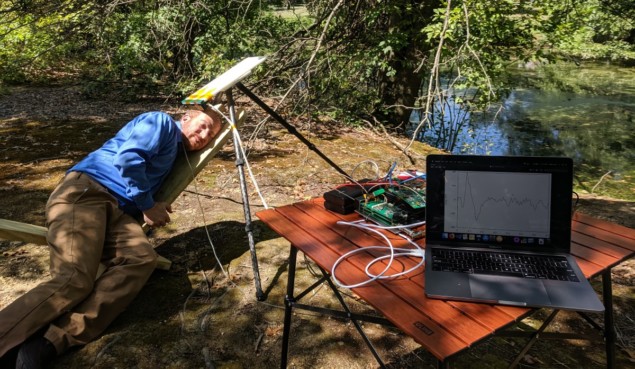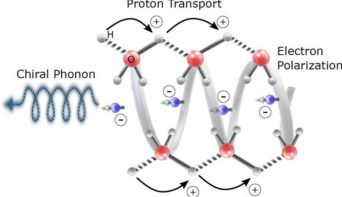
A portable sensor that can detect tiny biomagnetic signals from the brain and heart – without the expensive magnetic shielding needed by current magnetoencephalographic techniques – has been developed by researchers in the US. The low-cost set-up, which is small enough to fit in a backpack, can operate successfully even near to power lines and a railway, and could find application in field triage, brain–machine interfaces and even precise magnetic navigation.
Magnetometry in the form of magneto- and electroencephalography (MEG and EEG) can provide vital insight into human brain and cardiac function, with resolutions that exceed alternative techniques like functional MRI and positron-emission tomography (PET). Commercial MEG systems, however, are expensive to operate and come with a sizeable footprint – requiring both large-scale magnetic shielding and cryogenic cooling systems – which also limits the activities that they can be used to study.
In their new study, however, physicist Mark Limes of Twinleaf and colleagues from Princeton University have focused on optically pumped atomic magnetometers to measure the biomagnetic fields. These use lasers to make the atoms in alkali-metal vapours spin-coherent — and subsequently to measure how they are perturbed by the presence of magnetic fields, with the bulk magnetization precessing around the field of interest.
A key part of enabling the sensor to work in less controlled environments, Limes explains, lies in this free-precession measurement. “Many magnetic sensors are resonant systems, whether all-optical or requiring some magnetic field manipulation such as applied radio-frequency,” he says. “Any resonant system out in a noisy environment has feedback loops that track the magnetic field and are usually bandwidth-limited in a significant way.”
Issues arise because magnetic field feedback can only be controlled so well — meaning that techniques that should theoretically work well in Earth-sized magnetic fields end up, in practice, only working viably in highly controlled, magnetically shielded environments. “We don’t need to track the magnetic field or provide feedback, as the crux of our measurement is passively watching the atoms respond to the total magnetic field,” Limes explains.
Still, previous atomic magnetometers could also only operate effectively in shielded environments. The second part of the new design involves coupling two of the sensors together to form a magnetic gradiometer. “You can have a really good magnetometer, but in the frequency range that brain and heart signals are in, the magnetometer will be totally swamped by ambient magnetic noise from power lines, transformers or even the local train rail,” Limes tells Physics World. The “impressive leap” of the present work towards practical applications like medical imaging, he adds, comes from getting two sensors to work together, so that they “reject distant common-mode magnetic field sources that serve as background noise, while retaining sensitivity to nearby biomagnetic sources.”
In field tests, the prototype gradiometer device was able to pick up brain activity in a test subject’s audio cortex in response to randomized sound stimuli — despite the experiments being conducted in an unshielded, natural environment both within 750 m of a main railway line and within just 75 m of electrical power lines.
“Our sensor is really unprecedented, and opens up some new regimes and applications, including handheld or wearable alkali-based sensors,” Limes concludes.
“Measuring biomagnetic signals originating from either the human heart or brain is an arduous task, requiring magnetic sensors with exceptional sensitivity,” comments Nathanial Wilson, a physicist from The University of Adelaide who was not involved the present study. He adds: “This work effectively bridges the gap between tabletop experiments and real-world applications, and paves the way towards lost-cost, portable devices for diagnostic use in a clinical setting.”
“This is a very significant step forward as this makes femtotesla-level magnetometry practical,” adds Dmitry Budker, a physicist at Johannes Gutenberg University, who was also not involved in the present study. “Scientists can now turn their focus from magnetometer development to research on real-world applications.”

Wearable MEG scanner used with children for the first time
With their initial study complete, the researchers are now looking to improve the accuracy and sensitivity of their sensors – so that they might be able to compete with existing cryogenic superconducting quantum interference device (SQUID) MEG detectors – after which, they intend to build an array of sensors to demonstrate that the systems can perform the source localization necessary for MEG studies.
The research is described in Physical Review Applied.



